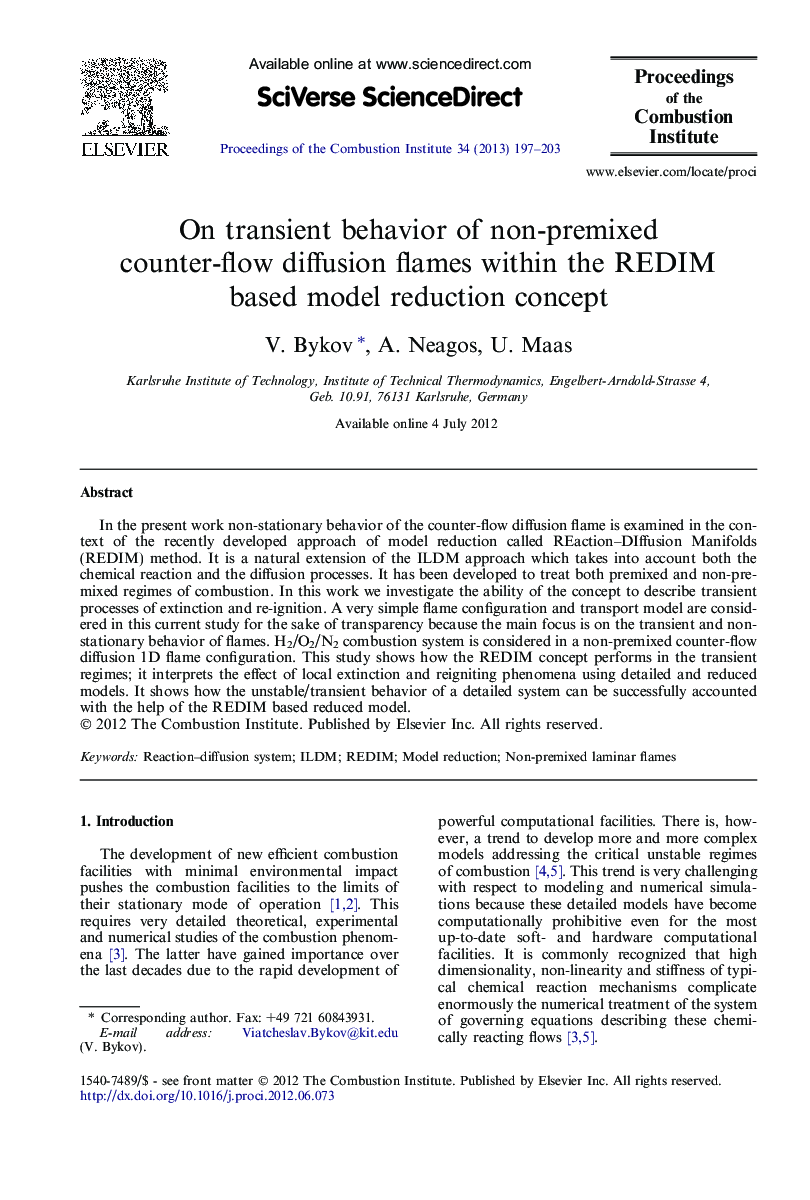| کد مقاله | کد نشریه | سال انتشار | مقاله انگلیسی | نسخه تمام متن |
|---|---|---|---|---|
| 241117 | 1427923 | 2013 | 7 صفحه PDF | دانلود رایگان |

In the present work non-stationary behavior of the counter-flow diffusion flame is examined in the context of the recently developed approach of model reduction called REaction–DIffusion Manifolds (REDIM) method. It is a natural extension of the ILDM approach which takes into account both the chemical reaction and the diffusion processes. It has been developed to treat both premixed and non-premixed regimes of combustion. In this work we investigate the ability of the concept to describe transient processes of extinction and re-ignition. A very simple flame configuration and transport model are considered in this current study for the sake of transparency because the main focus is on the transient and non-stationary behavior of flames. H2/O2/N2 combustion system is considered in a non-premixed counter-flow diffusion 1D flame configuration. This study shows how the REDIM concept performs in the transient regimes; it interprets the effect of local extinction and reigniting phenomena using detailed and reduced models. It shows how the unstable/transient behavior of a detailed system can be successfully accounted with the help of the REDIM based reduced model.
Journal: Proceedings of the Combustion Institute - Volume 34, Issue 1, 2013, Pages 197–203